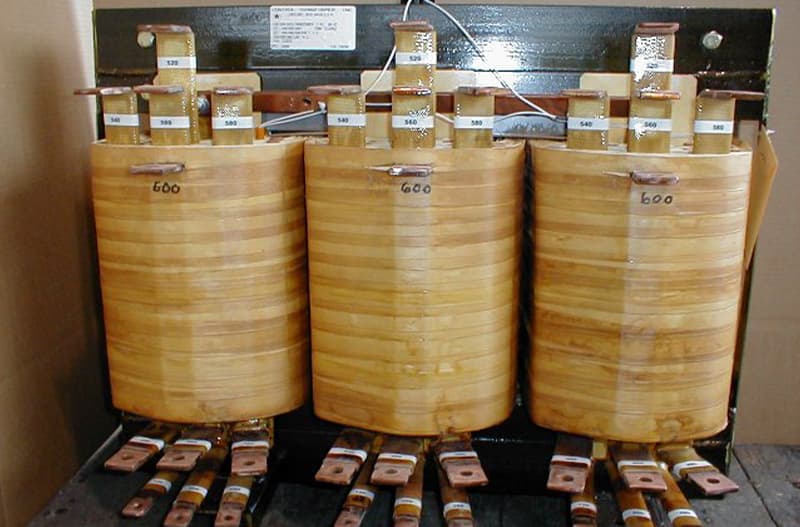How to Extend Transformer Life: Maintenance, Monitoring, Preventive Strategies
Transformers are among the most critical — and expensive — assets in any electrical system. They’re expected to operate reliably for decades, but...
Control Transformer designs high-performance, fully customized magnetic solutions that are tailored to your power, frequency, and environmental needs.
Control Transformer has more than 70 years of experience delivering reliable, custom-engineered magnetic solutions across numerous industries.
3 min read
By: Control Transformer, Inc. on Nov 5, 2025 1:52:08 PM

Transformers, though often out of sight and out of mind, are workhorses in electrical systems. Their lifespan isn’t just a matter of design — how you care for them over time matters enormously.
With the right preventive practices, many transformers can outperform their nominal life expectations, avoid sudden failure, and deliver better reliability. Below, we focus on what operators and maintenance teams can do to protect their transformers, without relying solely on high-end instrumentation. Later, we touch briefly on how Control Transformer’s value-added features can support your efforts.
The key to extending transformer life is treating maintenance as proactive, not reactive. Small anomalies — hot spots, loose connections, dust buildup, or restricted airflow — are your early warning signs. If addressed promptly, they seldom escalate into costly failures.
Preventive maintenance is about regular observation, test-based checks, and disciplined corrective action. Below are practical actions your maintenance team can take on a routine schedule to keep transformers healthy and reliable.
A visual inspection is one of the most effective and inexpensive maintenance tools.
Look for:
Keeping transformers clean, tight, and well-ventilated is one of the easiest ways to prevent premature aging.
Transformers rely on air circulation for cooling, making a clean environment essential.
A clean transformer runs cooler, performs more efficiently, and experiences less thermal stress.
Testing helps verify that insulation and electrical connections remain in good condition. Perform these checks periodically or when signs of stress appear.
These diagnostic tests, when trended over time, provide a clear picture of a transformer’s health and predict when intervention is needed.
Proper cooling is the cornerstone of transformer longevity.
Overheating is one of the most common causes of insulation breakdown in transformers, and most temperature-related issues are preventable with good airflow management.
Periodic tightening of connections is critical for maintaining efficient operation.
Even minor looseness can cause resistance heating and eventual failure — a simple tightening check can prevent costly downtime.
Industry experience shows that a few consistent habits deliver the greatest return:
Making preventive maintenance routine ensures predictable performance and avoids the higher costs of emergency service or replacement.
While most of a transformer’s longevity comes from routine care and inspection, certain technologies can help operators see what’s happening inside the unit more clearly. Control Transformer offers select value-added features that support these preventive efforts — not as flashy add-ons, but as practical tools to make maintenance more effective.
In some designs, integrated temperature monitoring can provide better insight into operating conditions, helping maintenance teams recognize early signs of overheating. Tap switch options and custom enclosures also give users flexibility to fine-tune voltage performance or accommodate future upgrades with minimal modification.
These options are meant to work alongside preventive maintenance, not replace it. At Control Transformer, we believe that hands-on care, paired with thoughtfully designed equipment, is the best way to ensure long-term reliability and performance.
Extending transformer life isn’t about complex analytics — it’s about consistency. Look, test, clean, tighten, and document. Small, steady actions done regularly make the biggest difference in keeping transformers reliable for the long term.
When your maintenance program is supported by a partner who understands transformer design and operation — and can provide value-added solutions that enhance performance — you gain confidence that your equipment will stay dependable for years to come.
Control Transformer is proud to stand behind the products we build and the people who maintain them. Together, we can keep your systems running strong, safely, and efficiently.
For more information on best practices and maintenance check out our resources section

Transformers are among the most critical — and expensive — assets in any electrical system. They’re expected to operate reliably for decades, but...

Transformers, though often out of sight and out of mind, are workhorses in electrical systems. Their lifespan isn’t just a matter of design — how you...

In today’s manufacturing plants, reliable power is non-negotiable. From automated production lines to precision robotics, even minor disruptions in...
Tell us about your magnetics needs. We'll give you an estimate of the resources needed to engineer a product to meet your exact specs, complete with a preliminary design.